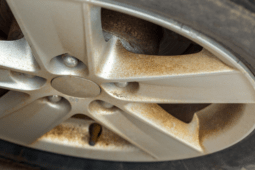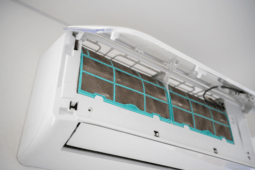ManMade Essential Toolbox: In Praise of the Humble Hacksaw, a Seriously Good DIY Value
Each week in 2015, ManMade is sharing our picks for the essential tools we think every creative guy and DIYer needs. We’ve selected useful, long-lasting tools to help you accomplish a variety of projects, solve problems, and live a hands-on lifestyle that allows you to interact with and make the things you use every day.
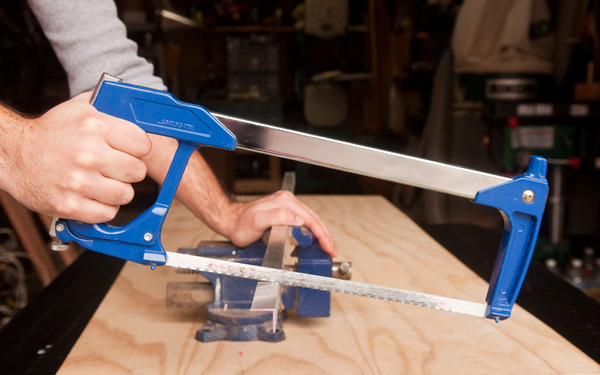
The hacksaw, like many of our favorite tools, has gone virtually unchanged for nearly 150 years, and its basic design dates to a couple centuries before that. Its structure is simple, its purpose is clear, and it does what it’s designed to do.
Which is, of course: cut stuff. Namely metal, but also wood and plastic/PVC. For the money, it’s incredibly versatile, and a must-have for woodworkers and general DIYers who occasionally have a need to cut metal for projects. Which, of course, if you make stuff, you’re gonna need to. Trimming bolts and other hardware to length, cutting aluminum angle or l-stock to size, cutting PVC or metal pipes, sizing sheet goods, etc, etc, etc.
I prefer them to a tool like an angle grinder and cutting disc for crosscutting metal, as they allow for much straighter, precision cuts, and despite the physical work involved, actually end up being a lot faster than setting up a powered tool, donning safety gear, etc. Not that metal cut-off saws aren’t great, but for quick, portable cuts that allow you to get back to work, nothing beats a solid $20 hacksaw. I’m not lugging anything with a power cord up a ladder or under a cabinet unless I absolutely have to.
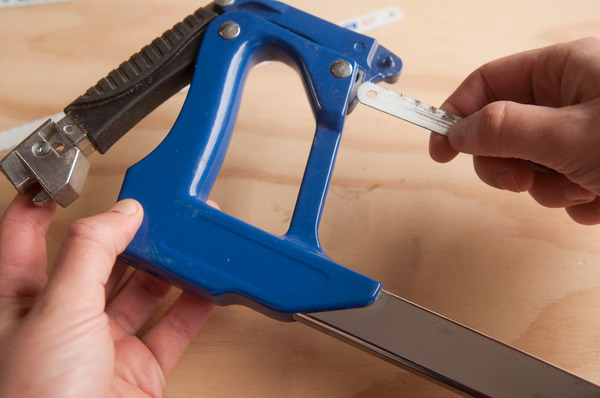
A hacksaw is a basic C-shaped frame, usually designed with a pistol-style grip at one end. Modern hacksaws have screw adjusted pins that make quick work of installing and removing blades, which are a standard length of 12″. Tightening the screw and closing the handle puts the blade under tension, allowing it to cut quickly with only the desired amount of flexing.
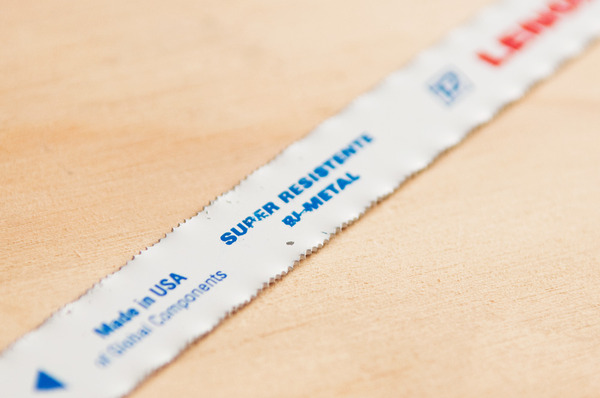
The real trick to using a hacksaw well: the bi-metal blade. These use a soft but high-speed steel to create a fine tooth pitch that will last against hard materials, but isn’t as brittle as harder steels, preventing breakage and allowing the blade to last a great deal longer. These blades also have a gentle wave pattern rather than teeth set side-to-side. This creates the right amount of clearance for the small teeth, allowing them to stay on the line.
In short: a bi-metal blade can cut, basically, any material soft enough to cut with a saw.

When looking for a hacksaw, your best bet is to simply buy one from a name you trust. They’re not $8.00 tools, but they’re not $40.00 ones either. Anything made from mostly metal in the $15.00-$25.00 range will work. Smaller saws, often called “junior hacksaws” work well in tighter spaces (say, under a sink), but if you want something small, just go for a knife-style grip “mini” or “compact” saw.
Don’t skimp here. The difference between a buy-it-for-life tool and a intro model is only a few bucks. $25 will get you a heavy-duty model that can support a variety of blades and won’t tire you out. Get the one you need, and never need another.
ManMade Recommended:


